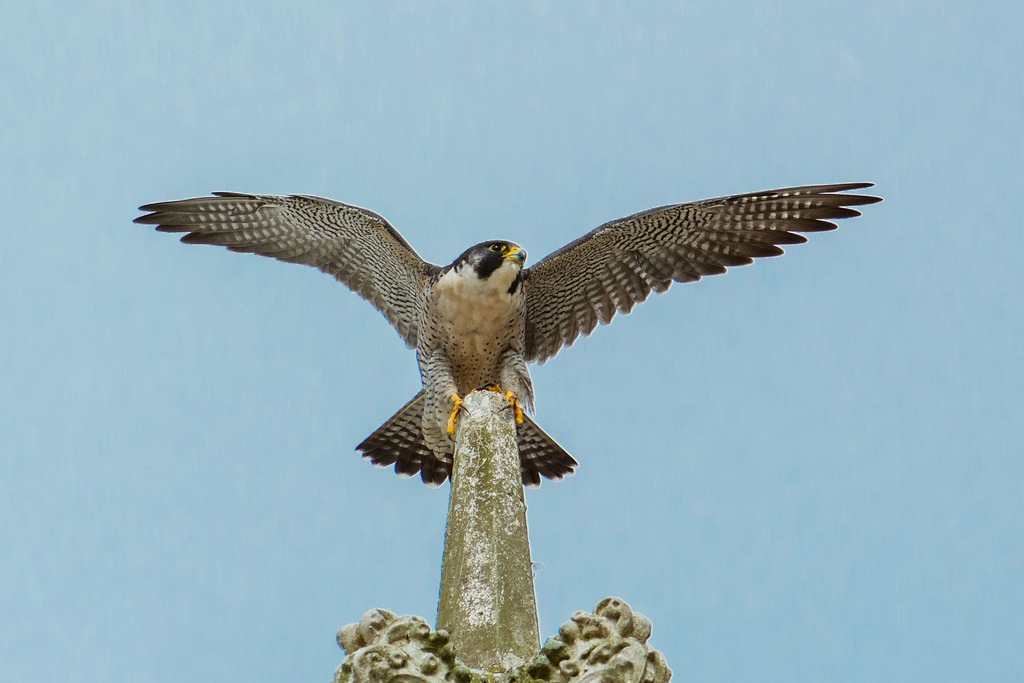São Paulo – The presence of falcons on Brazilian soil was assessed in a survey conducted exclusively over the internet. Undergraduate student Louise Mamedio Schneider and her advisor, Professor Erika Hingst Zaher, had the collaboration of bird watchers, expert illustrators such as Fredy Pallinger, and a range of images made available on the Wikiaves platform.
Pictured above, a shot by Brazilian Hudson Martins in the city of Valença, in the state of Rio de Janeiro. Most photos are taken by amateurs, but some have works related to the birds. Martins, for example, is a bird-watching tour guide.
The falcon is present all over the world in different subspecies. Found in the Middle East, it has symbolic importance and is widely used in the art of falconry. Despite being highly targeted by falconers, in an interview with ANBA, Schneider explained she had not found records of this type of activity in Brazil.
Read more on falconry:
The researcher explained that of the 19 peregrine falcon subspecies, some are in Latin America and others in North America. “One of the things we investigated was the hypothesis there was a migration of subspecies here from neighboring countries. However, we found out there are no records of this. The species we found in all Brazilian states were the tundrius, which lives in the United States, and anatum, from Canada and Alaska,” said Schneider.
The two scientists analyzed around 1,600 images made available on Wikiaves by bird watchers. With pictures and data, they discovered falcons arrive in Brazil from October to April. The reason for the migration is winter in North America.
Other habits analyzed in the study were dietary patterns and whether the birds travel in couples. “Falcons are monogamous and territorial. Studies showed they only meet during the mating season, but we also noticed some couples together here. Another interesting fact is that young falcon’s migration starts in November after the older ones. This was a finding of our research,” she said.
Falcons in the city
Another term used by the researcher is the ‘site fidelity,’ which means the falcons always return to the same perches and resting places. “So, it is possible to find a peregrine falcon that has been to your town before because it will probably be there again at the same spot the next year,” she said.
The peregrine falcons’ perches include buildings and poles. “The presence of these subspecies in cities happened due to a particular human intervention. These birds suffered from pesticide use a few decades ago, affecting their reproduction. To rescue the birds, scientists began placing nests in closer locations where they could observe them. So, the reintegration of pilgrims took place in the cities,” explained Schneider.
A medium-sized bird, the peregrine falcon, feeds on smaller birds. The fact they are generalists in food also helped them adapt to new places. “In Brazil, they feed on parakeets, birds that do not exist in North America. They also eat common pigeons and bats,” exemplified the researcher.
The study is now under analysis for possible publication in a specialized journal. Meanwhile, Schneider continues with another project, Biodiversity Scales [Escalas da Biodiversidade], in which she is part of the production team of a virtual exhibition on Brazilian snakes. As for Erika Hingst Zaher, it is possible to follow the scholar’s new research in the laboratory of the Biological Museum of the Butantan Institute, where she works, through the Instagram profile @mbiolab.
Translated by Elúsio Brasileiro




